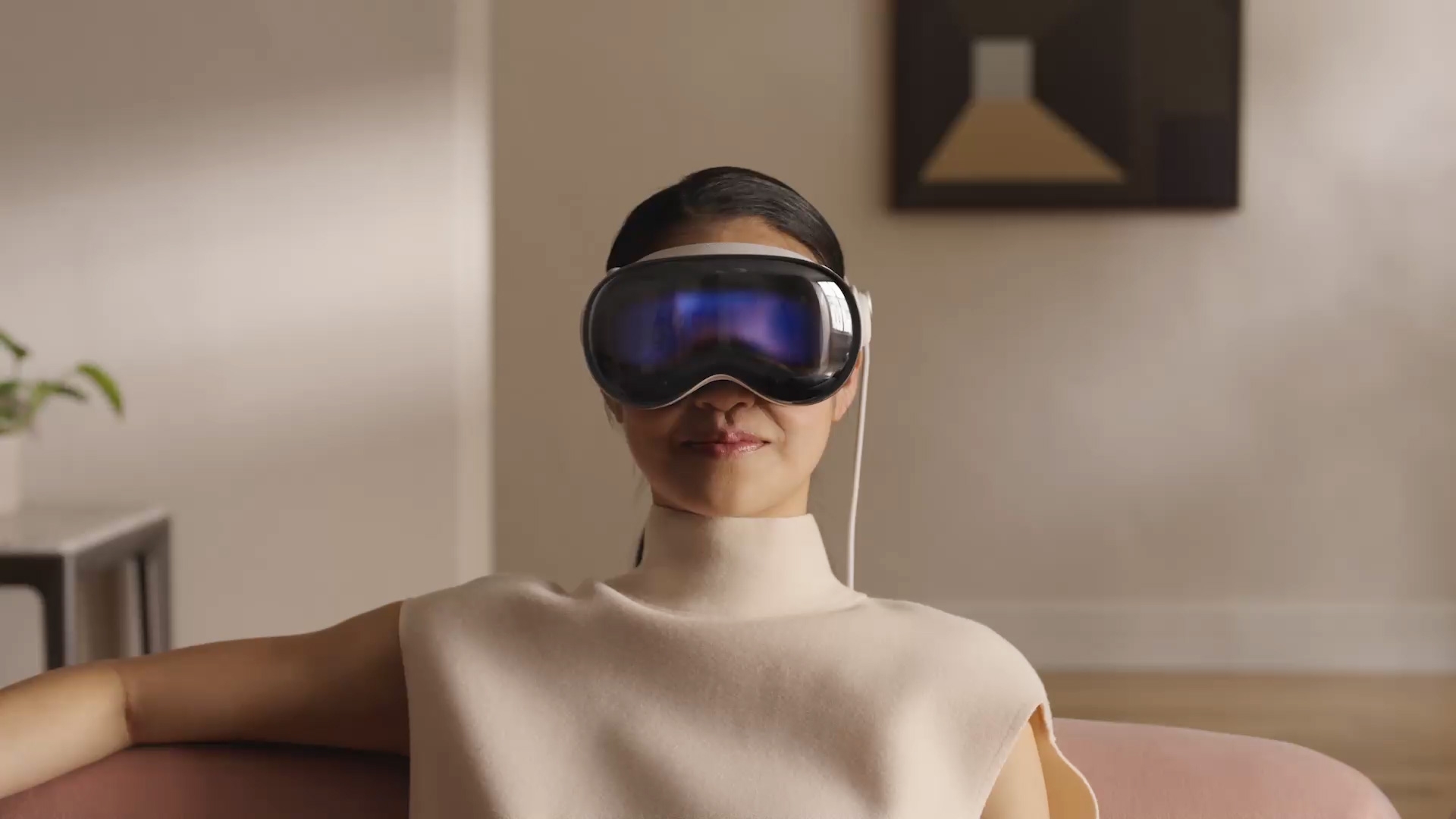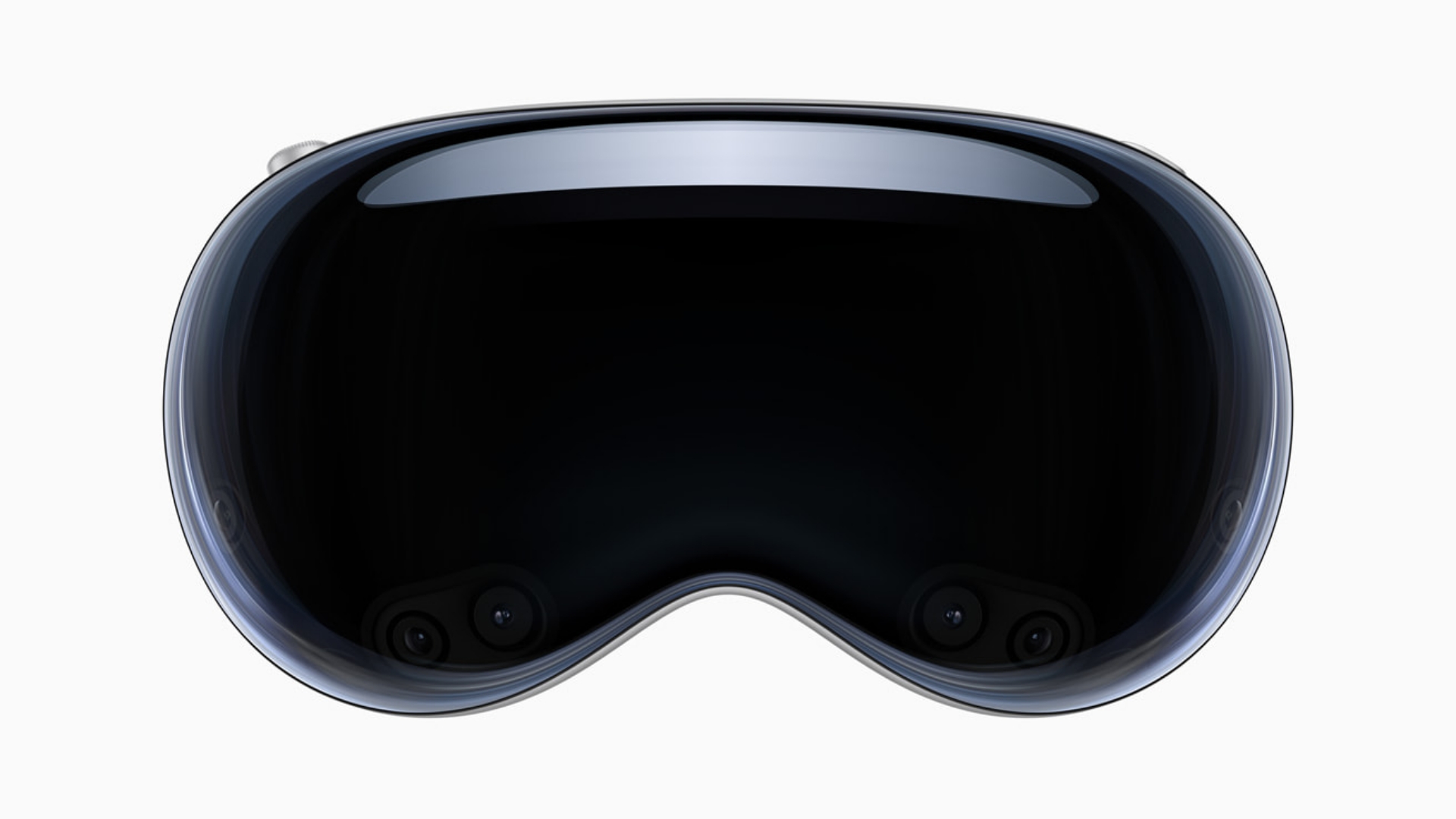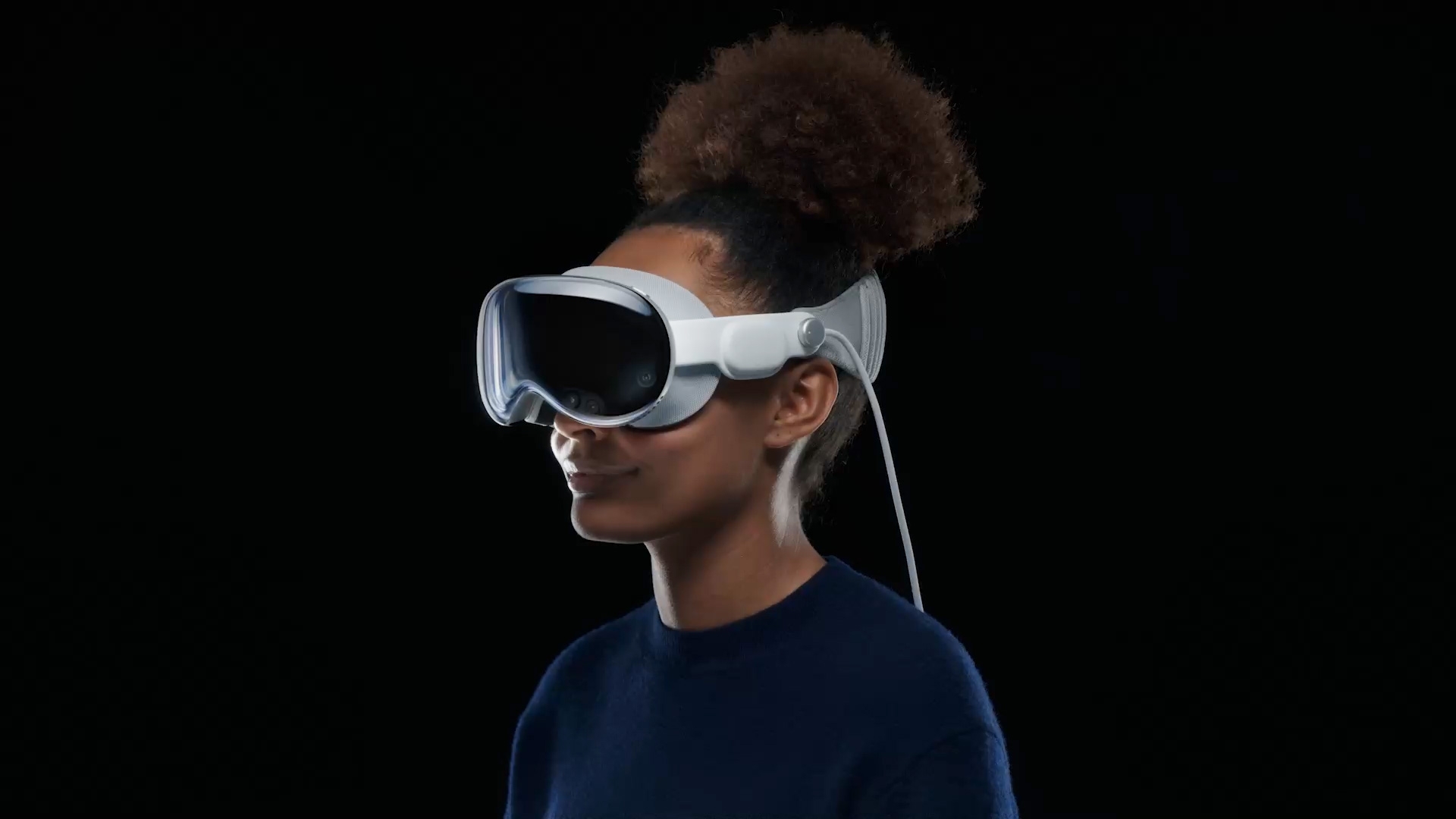The Apple Vision Pro is a high-resolution micro-OLED display system that was introduced in the US and consists of two displays.

Starting on February 2, the US will have access to the spatial computer, Apple Vision Pro. It enables users to have spatial experiences with their hands, eyes, and voices by fusing digital material with the real environment. More than a million compatible iOS and iPadOS apps are available for pre-order starting on January 19.

“The era of spatial computing has arrived,” said Tim Cook, Apple’s CEO. “Apple Vision Pro is the most advanced consumer electronics device ever created. Its revolutionary and magical user interface will redefine how we connect, create, and explore.”
With its cutting-edge visionOS operating system and user interface, Apple Vision Pro provides amazing spatial experiences. With its three-dimensional user interface and input mechanism, which are fully controlled by the user's hands, eyes, and voice, users may interact with apps with simple gestures, finger taps, virtual keyboards, and voice commands. Aside from dynamic landscapes like Haleakalā, Joshua Tree, Yosemite national parks, and even the moon's surface, users can also fully immerse themselves in Environments.
By releasing apps from display limitations and offering an endless canvas for multitasking and collaboration, Apple Vision Pro adds a new level to personal computing. With more than a million well-known apps available for iOS and iPadOS, Vision Pro integrates with the updated input system by default. Users can locate apps in the App Store that offer experiences with spatial computing that are unmatched by other platforms.
Users may watch movies and TV episodes from Apple TV+, Disney+, and Max thanks to ultra-high-resolution displays, which give more pixels for each eye than a 4K TV. This is the ultimate entertainment experience. Furthermore, Apple Vision Pro's potent powers are utilized by Apple Immersive Video and the latest spatial games to alter the environment surrounding players.
With the help of Apple Vision Pro, users may take and revisit their most treasured memories in whole new ways. Spatial images and videos instantly take users back to a particular point in time. FaceTime on Apple Vision Pro makes everyone on a call appear life-size by utilizing the surrounding area.
The wearable Apple Vision Pro provides outstanding computational performance in a small package size. It has specialized lenses, an ultra-high-resolution display system, and cutting-edge spatial audio. Moreover, the gadget has an advanced eye tracking technology that uses LEDs and high-speed cameras to cast patterns of invisible light onto the user's eyes for natural eye movement. Strong accessibility features including VoiceOver, Zoom, Switch Control, Guided Access, and more are available with Apple's VisionOS.

The device allows users to interact with it with their hands, eyes, voices, or a combination of these. With 100% recycled rare earth components used in the magnets, tin soldering and gold plating on the printed circuit boards, and 100% recycled aluminum for the frame and battery enclosure, the device is created with the environment in mind. With just 100% fiber-based packaging, Apple is getting closer to its 2025 deadline of doing away with plastic in all packaging.
The price of the Apple Vision Pro with 256GB of storage will start at $3,499 (U.S.). Apple Vision Pro pre-orders will open at 5 a.m. on Friday, January 19. PST, and will be accessible starting on Friday, February 2.
All U.S. retailers will carry Apple Vision Pro. Apple Store locations in the United States. Online at the Apple Store.
The cost of the ZEISS Optical Inserts Readers is $99 (U.S.), while the ZEISS Optical Inserts Prescription costs $149 (U.S.).
Users of the Apple Vision Pro have two alternatives for the perfect fit: a Solo Knit Band and a Dual Loop Band. Along with these accessories, Apple Vision Pro comes with a battery, USB-C power adapter, Light Seal, two Light Seal cushions, an Apple Vision Pro cover for the front of the device, and a polishing cloth.
Via Apple
